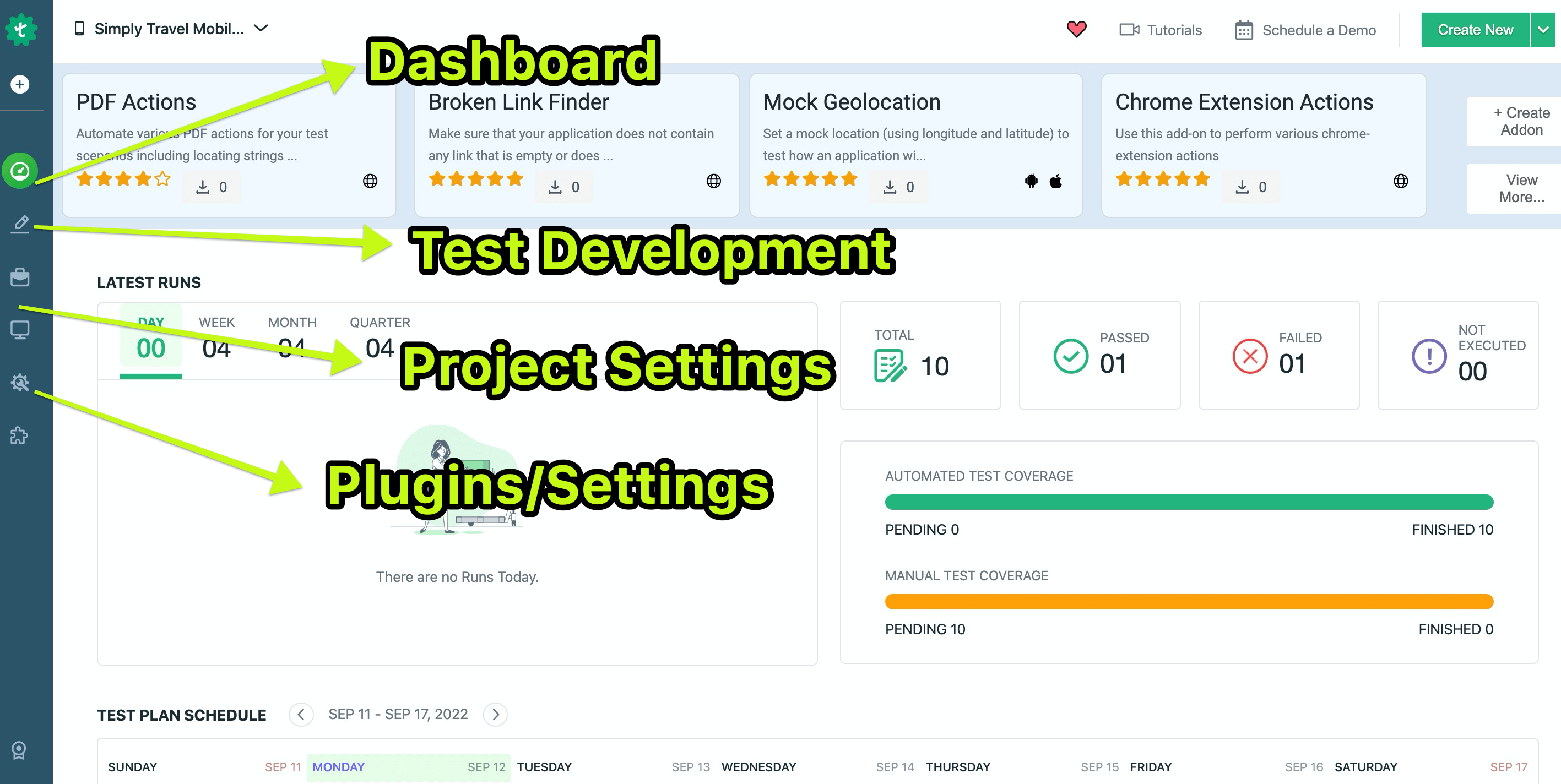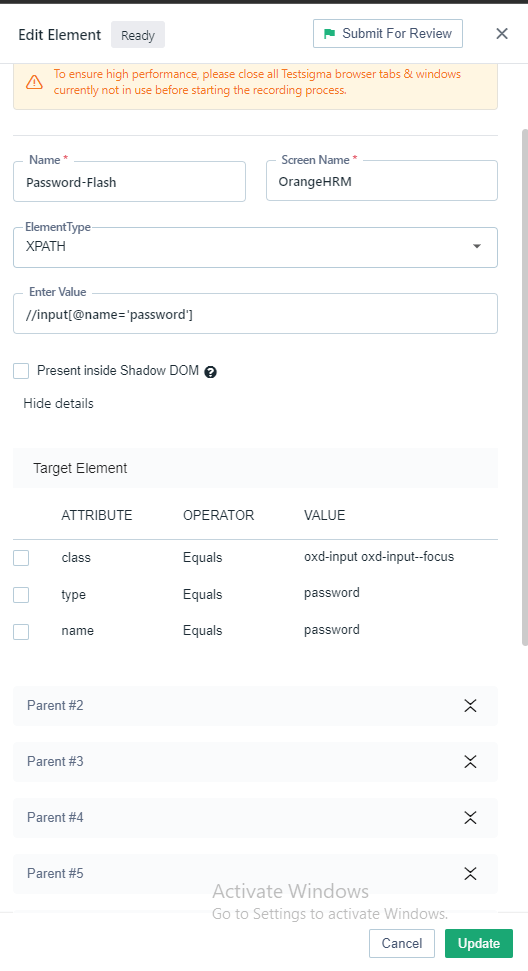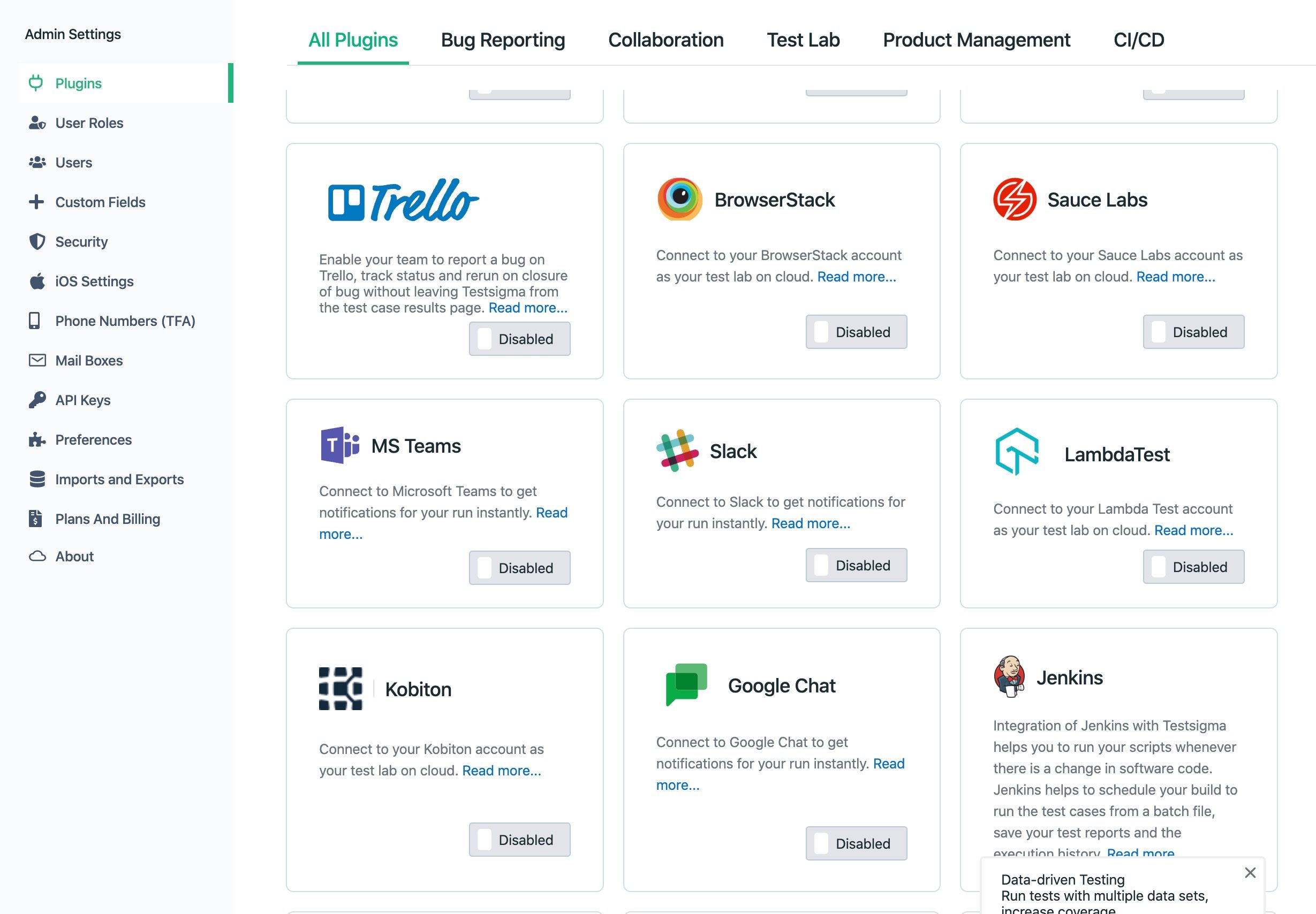Let me guess—you are already using Selenium.
So, why would you need yet another open-source test automation platform built on top of it?
Good question.
To find out, read on.
INDEX
What is Selenium
What are some benefits of open-source automation tooling?
How TestSigma Can Help You
What is TestSigma?
How to decide what automation tooling to use
What is Testability
What Challenges Can TestSigma Help With
AI-powered Auto-Heal functionality
Issues with established automation in test projects
How to know if your current software testing solution meets your needs
So is Testsigma right for you?
What is Selenium
First, Selenium is just an API.
It’s not a framework.
To create a framework, you must start from scratch to develop your own, leveraging the Selenium API to help drive a browser.
And that’s just the beginning.
Creating your solution takes time, money, and expertise in proper software development methodologies.
What if I told you that you could leverage an existing platform that, out of the box, comes with all the functionality you could want from a test automation framework?
Awesome!
What would you say if I then told you that the solution has an open-source option?
Double Awesome!
But first…
What are some benefits of open-source automation tooling?
Some of the benefits of open-source solutions are:
- It’s easy to switch. Switching between tools gives you a tremendous advantage enjoy saving time and efficiency.
- Lower hardware costs
- High-quality software
- No vendor lock-in
- Integrated management
- Simple license management
- Lower software costs
- Abundant support
Most of all, there is usually a community for open-source tools to help support queries and blockers. The tool is constantly being shaped an improved by community feedback.
Sound good, right?

How TestSigma Can Help You
In this blog, we’ll learn about TestSigma, which is an excellent, open-source automation platform that:
- Helps replace broken test stacks,
- Helps replace multiple frameworks
- Helps replace complex toolchains
You'll also discover:
- Current broken test automation practices
- How to minimize script creation and maintenance
- How to free up your teams to focus on value delivery instead of building and maintaining scripts and frameworks
So if you’re looking for an open-source automation platform that all your team members can use, Testsigma may be your solution!
Join The Guild Now at No Cost!
What is TestSigma?
I first heard about Testsigma on Episode 391 of my TestGuild Test Automation podcast.
Rukmangada Kandyala, Founder and CEO of Testsigma, told me that the company’s vision is to create an operating system for monitoring quality all in one place.
Although there are a host of automation testing tools already in existence, few pull everything together into a unifying testing tech stack.
Testsigma focuses on solving this common problem.
Rukmangada also mentioned that they’re trying to solve the most unsolved problem—a complex one that's remained unsolved for many decades.
Although the automation capabilities for testing have been mainly solved by tools like Appium, Selenium, and a few other frameworks, there is still a gap in the industry for a unifying platform to help manage the entire automation lifecycle.
Testsigma hopes to bring a competitive tool to the market that will finally resolve the problem many users face today.

How to decide what automation tooling to use
One major problem teams face is selecting proper frameworks and tools.
As you are probably aware, it is an extensive task for teams to work on a strategy and verify what tool suits them best according to the team's knowledge and past experiences.
TestSigma platform bakes in all the best tooling automatically.
Currently, few tools in the market have everything a software development team requires regarding automation testing.
It is vital to have a good automation strategy, including the tools, standards, and testability the team will follow.
What is Testability
Testability, in simple terms, can be defined as the extent of the ease with which a system can be tested.
These (selecting tooling and testability) are just two problems testers face, but there are others, like:
- Lack of testability support in products
- Lack of standard tools
- Lack of faster feedback loops
- lack of testing infrastructure
- Lack of test data management
- Scalability issues lead to further complexities.
However, in terms of Testsigma, all the above features are built in, leading to fewer complexities.

What Challenges Can TestSigma Help With
Testsigma addresses issues like
- Building a Framework
- Pressure on realizing ROI is high, therefore becomes a results-driven process.
- Strategic automation planning can be short-sighted and has long-term stability effects.
- Not enough knowledge base within the automation engineers
- Testing deadlines being short, leading to automated tests going into a backlog and soon a tech debt
- Product quality is compromised
- Buying or researching an automation tool
The upfront cost is inevitable, but paid tools are a ready-made solution.
The variance in testing scenarios means no tool can match your needs ideally. Off-the-shelf tools have no scope of extending or customizing the platform to your needs without the vendor's intervention.
Having a proper tool in place helps answer questions such as:
- What to automate?
- What framework to use?
- What language to test? (Figuring this out can be a big task when bringing automation into your team(s) for the first time.)
However, Testsigma has addressed these things, and it's all built-in and ready to be used.
Issues with established automation in test projects
Even if you have a testing framework in place and your team is contributing to test automation after 6-12 months, most firms inevitably start experiencing the following issues:
- Conducting impact analysis after code changes is arduous.
- No easy solution to handling dynamic elements and selectors
- Test documentation is not up to speed for new software releases.
- The traceability of affected tests is time-consuming and challenging to get 100% correct.
You can relate to this, right?
AI-powered Auto-Heal functionality
Testsigma has this covered, too, as the tool uses an AI-powered Auto-Heal functionality that fixes possibly flaky tests automatically.
(I know you knew AI/ML would eventually be mentioned in this article! LOL)
How does the “AI” work?
When you create an element with Testsigma chrome recorder, if you edit and check, it would have captured all the attributes of that element alone with XPath of the element, as shown in this image:

When running the test case, if it's not able to find the element with the XPath captured, it auto-heals the XPath with other attributes that were captured this process happens in the backend during the execution
Scaling Test Automation
Scaling in test automation is something I hear a lot about. It makes it difficult for a team to continue their efforts, and it becomes harder to establish design patterns and standardize frameworks across organizational groups.
With the variance in tech stacks, skill level, and experience, the Testing Center of Excellence faces the dilemma of replicating one automation project's success across different teams.
Testsigma can help with this, too, as it is entirely code-based and Techstack agnostic.
Its built-in APIs and drivers make adding integrations and extending automation much easier!
Rukmangada also said, “We are trying to simplify or replace this broken test stack with a platform that works out of the box and gives you all that flexibility odd of the complex to address all your complex test automation requirements.”

How to know if your current software testing solution meets your needs
Here are some signs of a well-maintained and scalable automation testing framework:
- It should be simple to set up, easy to use, and reliable to scale.
- It should be easy to adopt for both Automation and QA teams but should also enable them to keep up with the speed of development.
- It should help teams shift left without compromising on technical and budgetary constraints.
- It should enable end-to-end test automation and simplify how teams can extend it to match the various test scenarios encountered.
If you can't answer yes to all the points above about your current framework, maybe it’s time to look at something like Testsigma.
But wait, there’s more!
So is Testsigma right for you?

Testsigma is built from the ground up, combining the best of open-source and paid tools, making it the first open-source with an out-of-the-box framework.
- It includes a more straightforward set-up process, which many people appreciate and want.
- Integrated modules to manage tests, elements, and data, which is vital
- An Intuitive UI that helps a team/tests be more organized
- Built-in drivers, SDKs, and Test Runner for powerful, quick results
To conclude, when selecting an automation tool, you must understand what it is you want out of it and how the tool and the product team can support and maintain your automation suite.
Old automation issues, like maintenance, still haunt some teams to this day.
On the other hand, today, you have tools that are well structured with defined frameworks, making it fairly simple to deliver tests effectively and efficiently.
Testsigma is a tool with a customizable platform for your automated tests. This tool is not only for developers and testers but also for business analysts and project managers, as they can create their dashboards with the KPIs they need.
Rukmangada explained, “That's part of a unified approach. We are trying to bring everyone on board, sign up, and contribute to the quality of those applications.”
Give it a try yourself now from Github.






In detailed explained about test automation